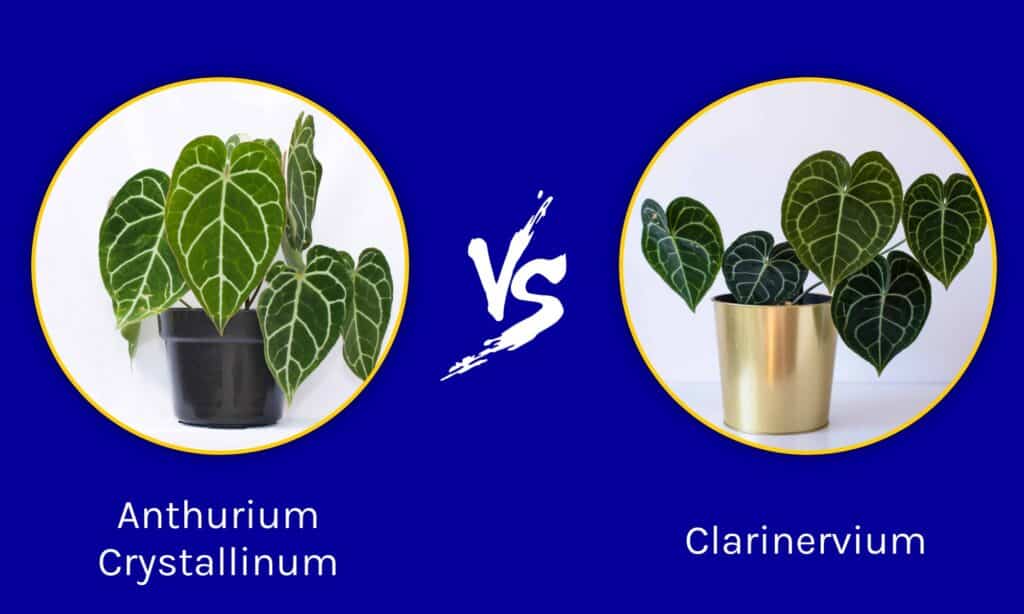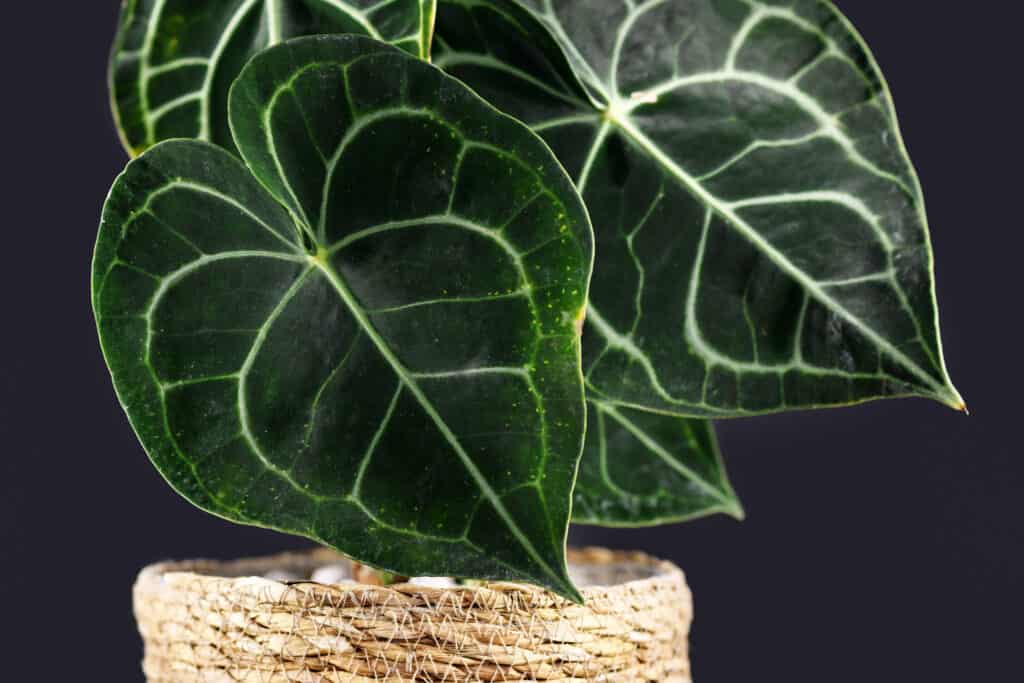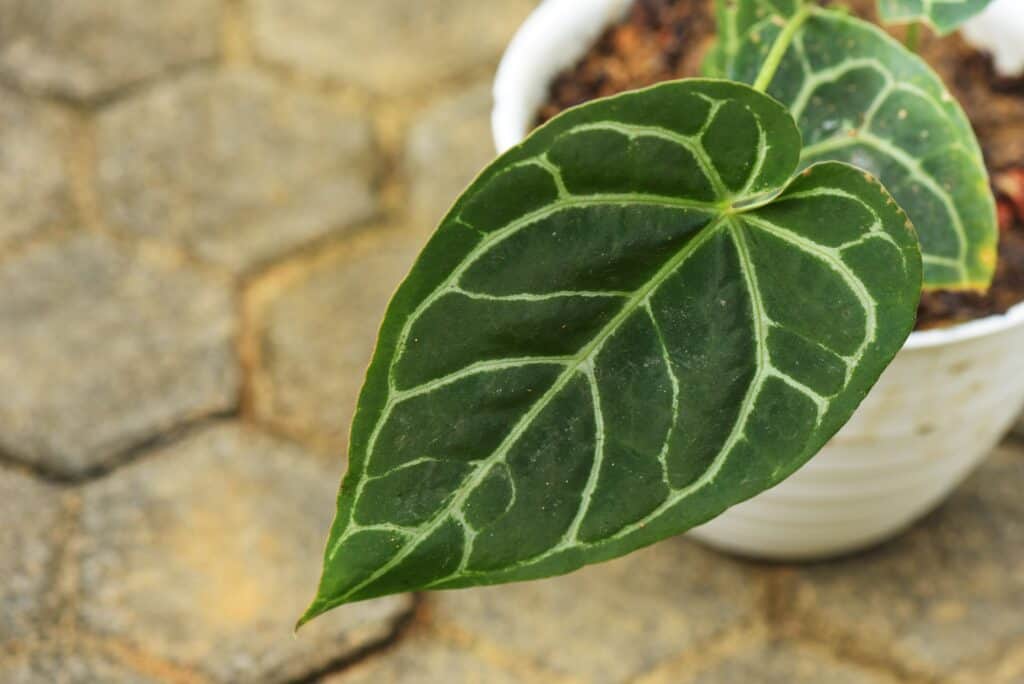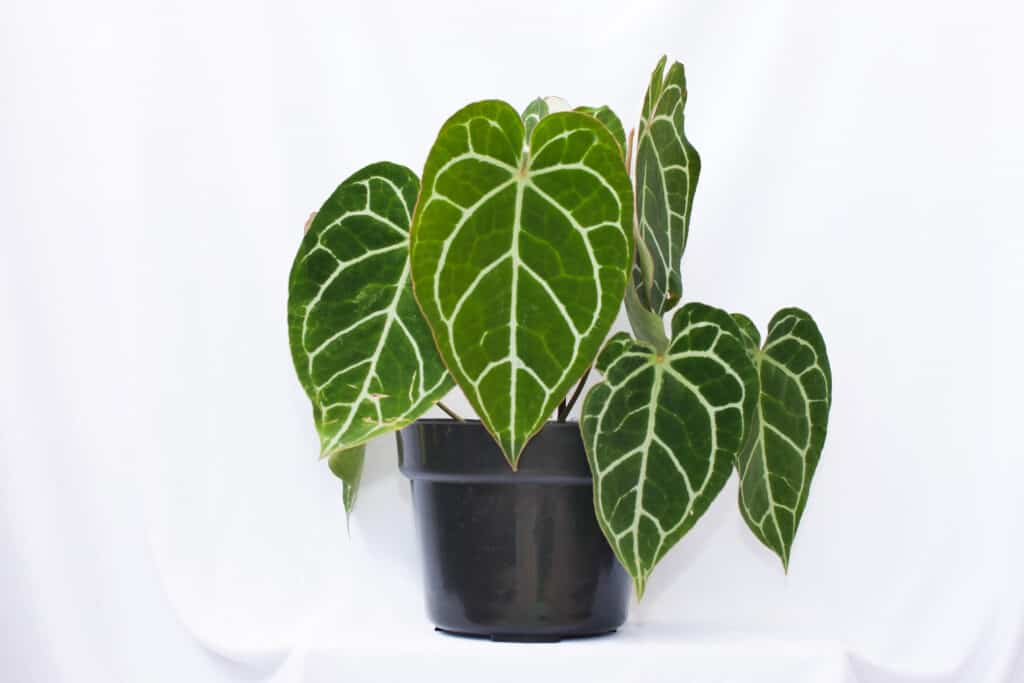If you are comparing house plants, there’s a reason you’re probably confused about anthurium crystallinum vs clarinervium. Strikingly similar in appearance, both of these plants appear related. But is this the case, and what tips can you follow in order to tell them apart? Which plant works best in your home and garden, depending on where you live?
In this article, we will compare and contrast anthurium crystallinum and anthurium clarinervium so that you can fully understand both of these plants as individuals. We will go over their physical description as well as how they grow and where they grow best. Let’s get started and compare these two anthurium plants now!
Comparing Anthurium Crystallinum vs Clarinervium

| Anthurium Crystallinum | Anthurium Clarinervium | |
|---|---|---|
| Plant Family and Genus | Araceae; Anthurium | Araceae; Anthurium |
| Description | Reaches roughly 3 feet in height and width, with large, spade-shaped leaves and spadix growth throughout the year. Leaves are a mild, soft green with distinct white veins, and the spadix are green as well. Leaves are copper or brown underneath. | Reaches roughly 2 feet tall and 3 feet wide. Leaves are large and heart-shaped, with a distinct deep green color and bright white veins throughout. Leaves are soft to the touch, with plain undersides. Grows spadix flowers and is often found growing atop other plants in its natural environment. |
| Uses | A popular houseplant for its large, beautiful leaves and fragrant blooms. Better for more experienced plant owners | A striking houseplant gaining popularity, but its care is more complicated than the average houseplant |
| Origin and Growing Preferences | Native to South and Central America; prefers humidity and bright, indirect light. Soil should be mixed with perlite or charcoal to keep it light and avoid root rot | Native to Mexico; prefers plenty of humidity and warm temperatures. Light should be bright and indirect so that you don’t lose leaf color or burn the leaves |
| Special Features and Fun Facts | Also known as crystal laceleaf for its shimmery leaves! | Also known as velvet cardboard anthurium for its soft leaves! |
Key Differences Between Anthurium Crystallinum vs Clarinervium

Crystallinum grows larger than clarinervium in both height and width, and its leaves are larger as well.
©Firn/Shutterstock.com
There are a few key differences between anthurium crystallinum and anthurium clarinervium. For example, the leaves of the crystallinum plant grow far larger than the leaves of the clarinervium plant. In addition, the leaves of the clarinervium plant are typically a darker green compared to the leaves of the crystallinum plant. Finally, the crystallinum plant has a copper or shiny appearance on the underside of its leaves, while clarinervium does not feature this.
Let’s discuss all of these differences in more detail now.
Anthurium Crystallinum vs Clarinervium: Classification
It’s no wonder why these anthurium plants look too similar to each other. They are related directly, belonging to the same plant family and genus. However, they are two distinct species from one another, leading to very subtle differences in their physical appearances. In case you hadn’t already guessed, the names of these plants are indeed their scientific classifications: anthurium crystallinum and anthurium clarinervium.
Anthurium Crystallinum vs Clarinervium: Description

The leaves of the clarinervium plant are a darker green with whiter veins compared to the less striking crystallinum plant.
©Endah Kurnia P/Shutterstock.com
No one would blame you if you couldn’t tell the difference between anthurium crystallinum and anthurium clarinervium. They are closely related, but there are some subtle differences in their sizes and leaves. For example, crystallinum grows larger than clarinervium in both height and width, and its leaves are larger as well. Speaking of leaves, this is where you will find the most distinct differences between crystallinum and clarinervium.
The leaves of the crystallinum plant reach an average of 20 inches indoors, while clarinervium leaves reach an average of 10 inches indoors. Anthurium clarinervium leaves are distinctly heart-shaped with a clear separation at the top, while crystallinum leaves are spade-shaped with less separation. Finally, the leaves of the clarinervium plant are a darker green with whiter veins compared to the less striking crystallinum plant. The crystallinum plant makes up for this, however, with distinct yellow-copper undersides, something that clarinervium doesn’t share.
Anthurium Crystallinum vs Clarinervium: Uses

The crystallinum plant has distinct yellow-copper undersides, something that clarinervium doesn’t share.
©Zuzana Habekova/Shutterstock.com
Both the anthurium crystallinum plant and the anthurium clarinervium plant have extremely similar uses to each other. They are both plants that are prized by houseplant experts for their striking foliage and overall simplistic care. However, the level of care needed in order to sustain the clarinervium plant and the crystallinum plant is more than the average houseplant, so keep this in mind if you are a new houseplant collector!
Anthurium Crystallinum vs Clarinervium: Origin and How to Grow
Speaking of their care, the crystallinum plant and the clarinervium plant have very similar needs. Both originating in rainforests in Mexico, South America, and Central America, both of these anthuriums thrive in a humid and warm environment. They enjoy staying consistently moist, but take care to make a soil mixture that is aerated and helps you avoid root rot. The light should also be specific for crystallinum and clarinervium- they like bright, indirect light so that their leaves don’t burn, but they don’t lose any of their unique colors!
Anthurium Crystallinum vs Clarinervium: Special Features

The leaves of the crystallinum plant reach an average of 20 inches indoors, while clarinervium leaves reach an average of 10 inches indoors.
©Masdim Photography/Shutterstock.com
Both of these anthurium varieties are special, for a number of reasons. They both have different colloquial names based on their physical appearances. For example, anthurium crystallinum is also known as the crystal laceleaf plant, given its shine and delicate leaves. The anthurium clarinervium plant is also known as a velvet cardboard anthurium, given its soft textured leaves!
The photo featured at the top of this post is © Firn/Shutterstock.com
Thank you for reading! Have some feedback for us? Contact the AZ Animals editorial team.






